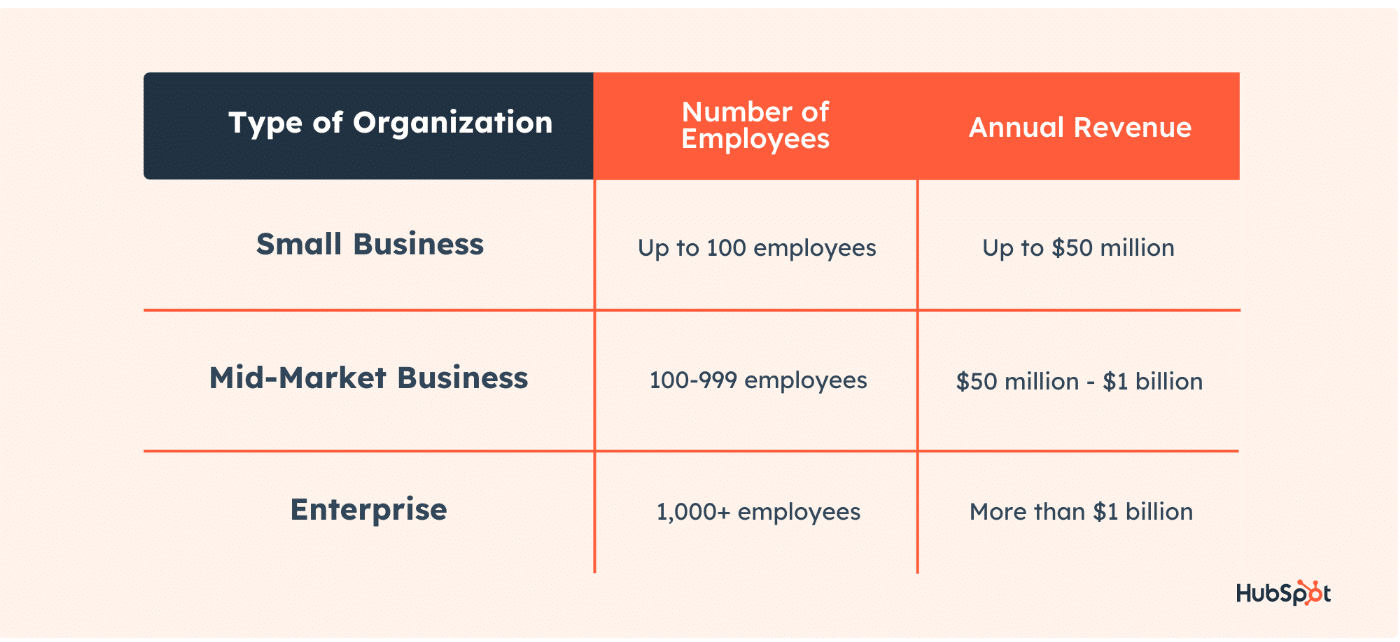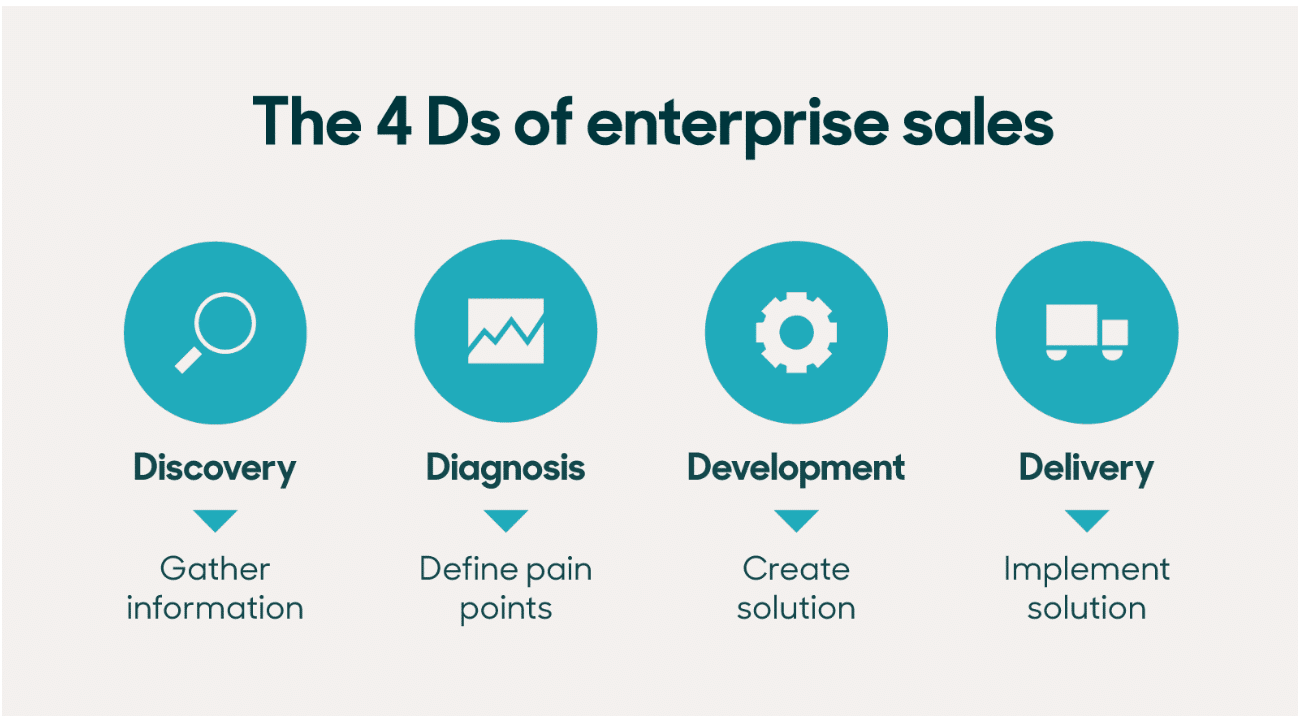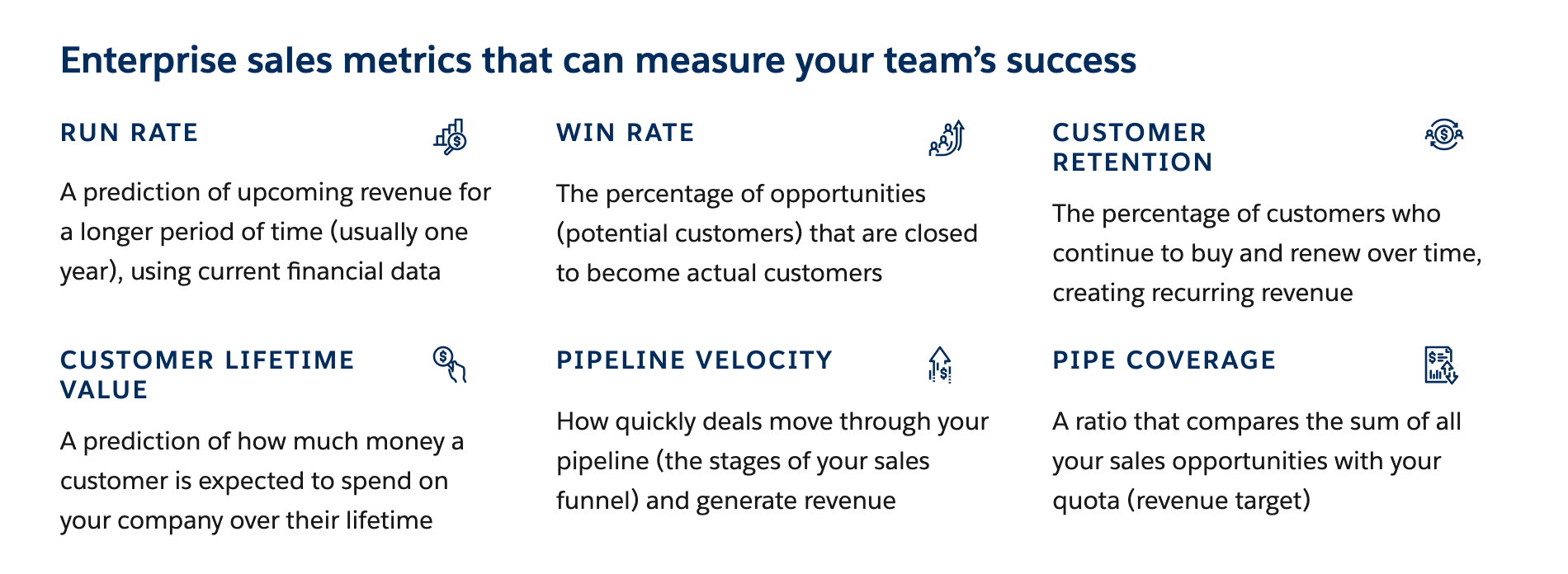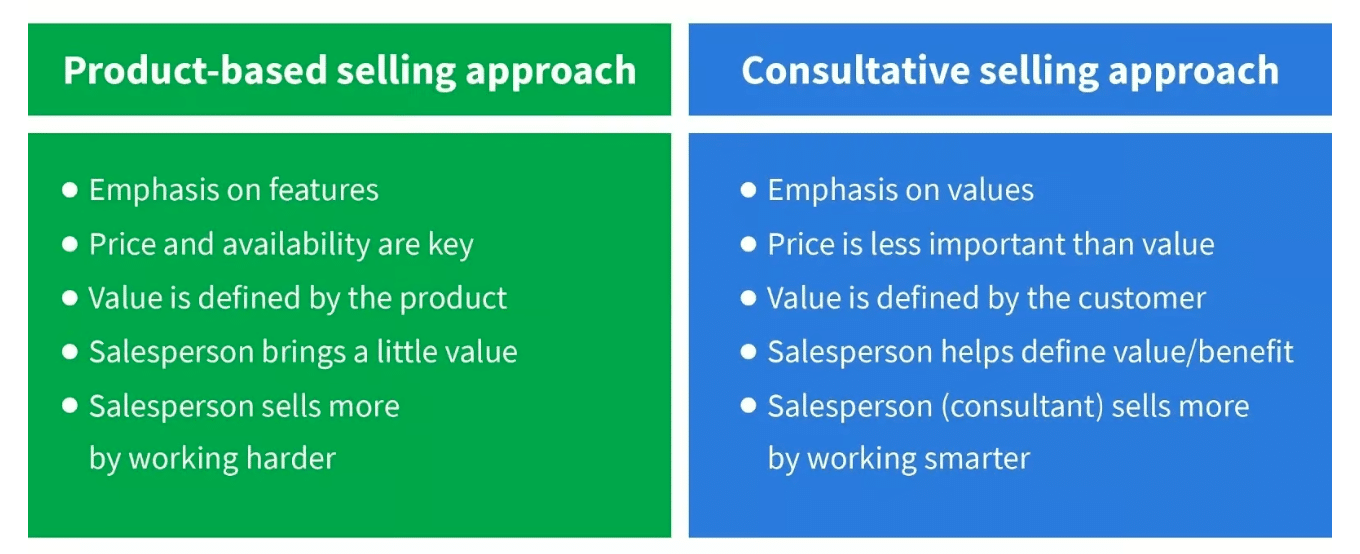With the continuous rise of digital transformation, enterprise tech businesses are relying on technology more than ever before to streamline their operations, improve their customer experience, and stay competitive. Your business needs a strong sales team and tools to effectively communicate your product’s main benefits to the target audience you’re trying to reach. Without this, many businesses may miss out on the many benefits that your technology can offer.
Enterprise tech sales professionals face a variety of challenges in their work. One of the main challenges is keeping up with the constantly evolving technology landscape and understanding how their products fit into the broader ecosystem. Additionally, they may face resistance from potential clients who are hesitant to adopt new technology or may already have established relationships with competitors. Sales professionals must also navigate complex decision-making processes within large organizations, often involving multiple stakeholders and lengthy sales cycles. Finally, they must effectively communicate the value of their products and differentiate themselves from competitors in a crowded market.
Hubspot shared this informative graphic on how much Enterprise SaaS companies look compared to SMBs or Mid-Market businesses:

So it’s safe to say that the approach can likely differ depending on your company size and the markets you’re looking to target. The enterprise sales cycle is normally longer, large-scale contracts, with multiple decision-makers.
We’re going to jump into effective sales strategies and best practices for enterprise software companies and how your team can overcome the challenges that come with this field.
Understanding the Customer
B2B enterprise sales rely heavily on a deep understanding of the customer’s needs and requirements. By conducting thorough research, sales professionals can gain valuable insights into the customer’s industry, business model, and pain points. Zendesk shares the key 4 steps to enterprise selling. Gathering information and customer pain points is typically the starting point:

Conduct Thorough Industry Research
In order to effectively sell enterprise technology solutions, it is essential to have a comprehensive understanding of the customer’s industry. This involves researching industry trends, market dynamics, and competitive landscape. By doing so, sales professionals can position their solutions in a way that addresses industry-specific challenges and positions their offering as a strategic advantage.
Additionally, understanding your target customer’s business model is crucial. This includes analyzing their revenue streams, operational processes, and organizational structure. By comprehending how the target customer operates, sales professionals can tailor their sales approach and demonstrate how their technology solution can optimize workflows, enhance efficiency, and drive growth.
Identifying the customer’s pain points is another essential step. This requires active listening and conducting thorough needs assessments. By understanding the challenges the customer faces, sales professionals can present their solutions as a means to overcome those obstacles and achieve the customer’s desired outcomes. This ensures that the goals of the customer’s business align well with the pain points your software platform solves.
Develop a Deep Understanding of the Customer’s Goals, Objectives, & Challenges
To effectively sell enterprise technology solutions, it is crucial to align the sales pitch with the customer’s goals and objectives. By understanding the customer’s strategic priorities, sales professionals can position their solution as a means to achieve those goals. For example, if the customer aims to increase operational efficiency, the sales pitch can focus on the software’s automation capabilities and cost-saving potential.
Furthermore, identifying the challenges the customer faces allows sales professionals to tailor their approach accordingly. By demonstrating how the technology solution directly addresses those challenges, sales professionals can highlight the value and relevance of their offering. This understanding enables a more personalized and compelling sales pitch that resonates with the customer’s specific needs.
Build Relationships Key Decision-Makers
In B2B enterprise sales, building relationships and establishing trust with key decision-makers is crucial. Sales professionals should focus on developing strong connections with stakeholders who have influence over the purchasing decision.
To build relationships, it is essential to engage decision-makers in meaningful conversations. This involves actively listening to their concerns, asking relevant questions, and demonstrating a genuine interest in their business. By doing so, your sales team can foster trust and credibility, positioning themselves as trusted advisors rather than just salespeople.
Sales professionals should consistently deliver value by providing relevant industry insights, sharing success stories, and offering personalized recommendations. By showcasing their expertise and understanding of the customer’s challenges, sales professionals can strengthen the relationship and establish themselves as reliable partners.
Effective Communication
Effective communication is a vital aspect in B2B enterprise tech sales as it allows sales professionals to connect with customers, convey the value of their technology solution, and understand the specific needs of the customer. Here are some key points to consider:
Tailoring Your Messaging
One-size-fits-all sales pitches rarely succeed in the B2B enterprise space. Instead, sales professionals should tailor their messaging to align with the customer’s needs and interests. This requires a thorough understanding of the customer’s pain points and goals, as we previously mentioned.
By customizing the messaging, sales professionals can highlight how the technology solution addresses the specific challenges faced by the customer. They can emphasize the unique features and capabilities that align with the customer’s requirements. This approach demonstrates empathy and positions the solution as a strategic fit for the customer’s business.
You can tailor your messaging on a variety of platforms as well (depending on where your audience typically resides). LinkedIn is a popular channel as 50% use it as a trusted source. Furthermore, 75% of B2B buyers use social media in general to make buying decisions.
Clearly Articulating the Software’s Value Proposition
To effectively sell an enterprise technology solution, it is essential to clearly articulate its value and benefits. Your sales team should be able to succinctly communicate how the technology addresses the customer’s pain points and delivers tangible results.
Rather than focusing solely on the technical features of the solution, sales representatives should emphasize the outcomes and business impact it can generate. They should highlight the specific benefits that the customer can expect, such as increased productivity, cost savings, improved customer satisfaction, or competitive advantage.
If your software solutions provide customization options, that is an incredibly beneficial upside that your enterprise sales reps should emphasize as well.
Using compelling language and real-world examples, sales professionals can paint a vivid picture of how the technology solution can transform the customer’s business. They should connect the dots between the customer’s needs and the unique value that their solution brings, fostering a clear understanding of the benefits and creating a sense of urgency.
Be an Active Listener
Active listening is a fundamental skill in effective communication. Sales professionals should listen attentively to the customer’s challenges, objectives, and concerns. By doing so, they can gain valuable insights that will guide their sales approach and positioning.
In addition to active listening, your sales representatives should ask probing questions to uncover the customer’s specific requirements. These questions should delve into the customer’s pain points, desired outcomes, budget constraints, implementation timeline, and any other factors that influence their decision-making process.
By asking thoughtful and open-ended questions, sales teams can encourage customers to share more information and articulate their needs in detail. This not only helps in understanding the customer’s requirements but also builds rapport and trust as the customer feels heard and understood.
The information gathered through active listening serves as the basis for crafting a tailored solution and presenting it in a way that resonates with the customer’s unique circumstances.
Customized Solutions
In B2B enterprise tech sales, offering customized solutions is essential for meeting the unique needs and requirements of each customer. By offering personalized solutions, sales professionals can position themselves as trusted advisors who understand the customer’s specific challenges.
Offer Personalized Solutions
Every customer is unique, with specific pain points, goals, and operational requirements. Sales professionals should avoid approaching each customer with a generic sales pitch or a cookie-cutter solution. Instead, they should take the time to understand the customer’s individual circumstances and tailor their offering accordingly.
By demonstrating flexibility and adaptability, sales can show the customer that their solution is not rigid but can be tweaked to fit the customer’s specific needs. This involves analyzing the customer’s existing processes, workflows, and systems to identify areas where the technology solution can bring the most value. This not only shows that your company cares about the customer, but brings an appealing solution to the prospect’s current business roadblocks.
Collaborate with the Customer
Successful B2B SaaS and tech sales involve a collaborative approach between the sales representative and the customer. Instead of imposing a pre-defined solution, sales teams should actively engage the customer in the solution design process.
By involving key stakeholders and decision-makers, you can gain valuable insights into the customer’s requirements, preferences, and constraints. Through workshops, consultations, and regular communication, they can co-create a solution that aligns with the customer’s unique needs and business objectives.
This collaborative approach not only ensures that the solution meets the customer’s expectations but also strengthens the relationship between the sales professional and the customer. It fosters a sense of ownership and investment in the solution, increasing the likelihood of a successful implementation.
You never want your software platform to remain stagnant. SaaS businesses should consistently look toward their current customers’ experiences and maintain innovation by evolving and updating their products/services.
Building a Strong Sales Team
A strong and competent sales team is vital for achieving success in B2B sales. Building such a team requires careful selection, training, and fostering a collaborative and supportive team culture.
Hire Individuals with a Strong Technical Background
In the B2B tech space, it is crucial to have sales representatives who possess strong technical skills. They should have a solid understanding of the technology solutions being sold, as well as the ability to articulate complex concepts in a clear and concise manner.
When hiring, it is important to assess candidates’ technical knowledge, their ability to grasp new technologies, and their aptitude for learning. Look for individuals who have experience working with similar technologies or who have demonstrated a strong interest in the industry.
Once the team is formed, providing ongoing training and education is essential. This could include product training sessions, workshops, and industry conferences. By investing in their knowledge and skills, sales professionals can stay up to date with the latest advancements, enabling them to better understand and communicate the value of the technology solutions to customers.
Promote a Collaborative Culture
Building a collaborative and supportive team culture fosters a sense of unity and cooperation among your sales team. Encourage employees to share knowledge, best practices, and success stories. Establish open channels of communication that allow for idea exchange and problem-solving.
Recognize and reward teamwork and celebrate collective achievements. By fostering a positive team culture, sales professionals can feel motivated, valued, and more engaged in their work, ultimately leading to better performance and customer satisfaction.
Provide Ongoing Training and Growth Opportunities
According to Brainshark, 43% of companies have made a moderate-to-high investment in sales learning and development technology. This statistic continues to rise. Your SaaS company should be offering your team regular training sessions on sales techniques, objection handling, negotiation, and communication skills. In tandem with that, sales technology that optimizes the selling process can go a long way in improving workflows.
Investing in sales enablement tools and technology provides resources and guidance to your sales team. This could include CRM systems, sales playbooks, competitive intelligence tools, and data analytics platforms. These tools can streamline sales processes, improve efficiency, and provide valuable insights into customer behavior and market trends. In fact, 77% of sales professionals say their sales org plans to invest more in sales intelligence tools.
Encourage self-improvement by providing opportunities for sales professionals to attend industry conferences, workshops, and seminars. Additionally, you may consider offering mentorship programs where experienced sales professionals can guide and support newer team members.
By prioritizing ongoing training and development, sales professionals can stay ahead of the competition, refine their sales techniques, and deliver exceptional results. Not only that but providing strong technological tools that optimize processes will make your team’s workflow streamlined and timely.
Leveraging Data & Analytics
Sales representatives should always reference data and analytics revolving around your product/service. This is so that they can easily make informed decisions instead of estimated guesses. Gathering useful data can help your team find potential customers, seek upselling and cross-selling opportunities, and measure their sales performance effectively.
Utilize Data-Driven Insights
Data and analytics provide valuable insights into customer demographics, behaviors, and preferences. Sales teams can leverage this information to identify potential customers who are most likely to benefit from their SaaS solutions.
By analyzing market data, sales professionals can identify target industries, segments, or geographical areas where there is a high demand for their offerings. This enables them to focus their sales efforts on the most promising opportunities, increasing their chances of success.
Utilizing data-driven insights also allows your team to segment and prioritize leads based on various criteria such as revenue potential, buying intent, or fit with the solution. This ensures that resources are allocated efficiently and that sales efforts are directed toward the most valuable prospects.
Identify Upselling & Cross-Selling Opportunities
Data and analytics enable sales teams to monitor and analyze customer behavior, providing insights into their needs and preferences. This information can be leveraged to identify upselling and cross-selling opportunities. Without this useful information, it makes it extremely hard to upsell to your current customer base.
By tracking customer interactions, purchase history, and usage patterns, sales professionals can identify additional products, features, or services that may be relevant to the customer’s evolving needs. This allows them to proactively approach customers with tailored recommendations, positioning themselves as trusted advisors who understand their businesses.
Also, data-driven insights help your team anticipate customer needs and proactively address potential pain points. By staying informed about product updates, industry trends, and customer feedback, your employees can provide valuable guidance and suggestions that drive customer satisfaction and loyalty.
Measure Sales Performance
Analytics plays an essential role in tracking sales performance. By analyzing sales data, teams can gain a comprehensive understanding of their performance, identify areas of improvement, and optimize their processes.
Sales analytics provide insights into key metrics such as conversion rates, deal velocity, win/loss ratios, and revenue growth. This information allows teams to identify bottlenecks in the sales funnel, pinpoint areas for improvement, and optimize their sales strategies accordingly. Salesforce shares some other key metrics your enterprise sales team should keep on their radar:

Analytics also helps in measuring the effectiveness of marketing campaigns and lead-generation efforts. By tracking the performance of different channels and campaigns, sales teams can allocate resources effectively and focus on strategies that yield the highest return on investment.
By analyzing market trends, competitive intelligence, and customer feedback, sales teams can make informed decisions about product positioning, pricing strategies, and market expansion opportunities.
Demonstrating ROI
Demonstrating a clear return on investment (ROI) is essential for persuading customers to make a new technology investment. By showing the financial and non-financial benefits of the SaaS solution, providing compelling case studies and success stories, and quantifying the value it brings, enterprise businesses can build a strong case and instill confidence in their customers.
Show a Clear ROI For the Customer’s Investment
Enterprise businesses must articulate how the technology solution delivers a clear return on investment for the customer. This involves quantifying the financial impact and presenting a compelling business case.
Your software company should quantify the cost reductions, productivity gains, or revenue increases that the customer can expect to achieve through the implementation of the technology.
It’s crucial to align the value proposition with the customer’s strategic objectives. By tying the benefits of the enterprise solution to the customer’s specific goals, such as increasing market share, improving customer satisfaction, or optimizing operational efficiency, sales representatives can establish a compelling ROI argument.
Provide Case Studies & Success Stories of Previous Customers
Your sales process is a great opportunity to utilize case studies and benchmark accomplishments from previous customers that have used your product. Case studies and success stories are powerful tools in demonstrating the ROI and benefits of the technology solution. These are relevant examples of how the solution has positively impacted customers in similar industries or with similar pain points.
Case studies should highlight specific challenges faced by the customers, the implemented solution, and the measurable results achieved. By showcasing real-world examples of how the technology has generated positive outcomes, sales professionals can build credibility and confidence in the SaaS solution.
Additionally, success stories can address common objections or concerns that potential customers may have. They can showcase how the technology overcame implementation challenges, addressed integration issues, or mitigated risks, providing reassurance to the customer.
Quantify the Financial & Non-Financial Benefits of the Software
To strengthen the ROI proposition, your enterprise sales process should quantify both the financial and non-financial benefits of the technology solution. Financial benefits may include cost savings, increased revenue, improved profitability, or reduced operational expenses.
Non-financial benefits are equally important and can include improved customer satisfaction, enhanced brand reputation, increased employee productivity, or competitive advantage. Your team should emphasize these intangible benefits as they contribute to the overall value proposition and differentiate their solution from competitors. Even though they aren’t tangible these benefits can still build a strong reputation for your enterprise product.
Most of the time, you don’t want to take a product-based selling approach. Your business’s sales team should lean more towards a consultative approach. Pipedrive shares a comparison as to why that is:

Overall, enterprise businesses can estimate the potential impact of the technology solution on the customer’s business through data analytics. They can leverage industry benchmarks, customer feedback, and predictive modeling to provide a realistic assessment of the benefits the customer can expect to achieve.
Post-Sale Support & Relationship Management
Post-sale support and relationship management are critical for ensuring customer satisfaction, fostering loyalty, and maximizing long-term success. By prioritizing a smooth implementation and onboarding process, proactively addressing issues, and building strong, lasting relationships with customers, sales professionals can solidify their position as trusted partners.
Ensure a Smooth Implementation & Onboarding Process
The success of a technology solution relies heavily on a smooth implementation and onboarding process. Your team should work closely with the customer and internal teams to ensure a seamless transition from the sales phase to the implementation phase. This also will significantly improve your customer relationship management.
By establishing clear communication channels and project milestones, sales professionals can manage customer expectations and keep them informed about the progress and timelines. They should proactively address any potential roadblocks, align internal resources, and provide guidance and support to the customer throughout the implementation process.
Offering comprehensive training sessions and resources to end users helps accelerate the onboarding process and ensures that customers can fully leverage the capabilities of the technology solution. By investing in the customer’s success from the start, enterprise software businesses can strengthen the relationship and build trust.
Proactively Address Issues That Arise
Even with a smooth implementation, issues or concerns may arise after the sale. No matter what, you should be proactive in addressing these challenges to maintain customer satisfaction and demonstrate your commitment to long-term success.
By establishing a dedicated customer service team and providing clear channels for customer feedback, you can ensure that any issues are promptly addressed and resolved. Regular check-ins and proactive communication help identify and address concerns before they become major problems.
Taking a customer-centric approach, your SaaS company should actively listen to feedback, understand the customer’s pain points, and work collaboratively to find solutions. By demonstrating a commitment to customer success beyond the initial sale, you’ll strengthen the relationship and enhance customer loyalty.
Nurture Customer Loyalty
Enterprise sales teams should focus on nurturing customer loyalty and becoming trusted advisors to their clients.
Regular communication and engagement are essential in building these relationships. You should schedule periodic business reviews to assess the customer’s evolving needs, discuss new challenges, and identify opportunities for further optimization or expansion of the technology solution.
Additionally, providing ongoing value-add services such as training webinars, workshops, or industry insights demonstrates a commitment to the customer’s success and positions the sales team as a reliable resource.
Building a strong network within the customer’s organization, from end-users to key decision-makers, allows sales to understand the customer’s organizational dynamics and tailor their approach accordingly. By establishing personal connections and investing in relationship-building, you can foster loyalty and increase the likelihood of repeat business and referrals.
Adapting to Industry Trends
In order to remain competitive in the enterprise market, it’s vital for B2B software companies =to adapt to industry trends. By staying updated with the latest technological advancements, anticipating emerging customer needs, and continuously evolving sales strategies, professionals can position themselves as industry leaders.
Stay Updated With The Latest Software & Tech Advancements
The technology landscape is constantly evolving, and enterprise sales representatives must stay abreast of the latest advancements in their field. This includes keeping up with emerging technologies, industry trends, and market dynamics.
Engaging in continuous learning and professional development is crucial. Your sales employees should attend industry conferences, participate in webinars and workshops, and actively seek out relevant information and resources. This helps them gain insights into emerging technologies and understand how these advancements impact customer needs and challenges.
Networking with industry experts, thought leaders, and colleagues also provide valuable opportunities to exchange knowledge, share best practices, and stay informed about the latest trends. Through this, sales professionals can position themselves as trusted advisors who can guide customers through the rapidly evolving technology landscape.
Address Emerging Customer Needs & Challenges
Strong enterprise-level SaaS companies proactively anticipate and address emerging customer needs and challenges. By closely monitoring industry trends and engaging with customers, you can identify evolving pain points and align your product to meet those needs.
Maintaining regular communication with customers is key. By engaging in active listening, conducting customer surveys, and analyzing market research, sales teams can gain insights into customers’ evolving requirements and challenges. This information allows them to tailor their approach, position their solutions effectively, and provide valuable guidance.
Continuously Evolve Sales Strategies
To remain competitive, your enterprise software sales team must continuously evolve their sales strategies. This involves regularly evaluating and refining their approach based on industry trends, customer feedback, and market dynamics.
Along with tracking data analytics as we mentioned, experimenting with new sales techniques and methodologies can also be beneficial. You need to stay open to adopting innovative approaches, such as social selling, account-based marketing, or value-based selling, to align with changing customer preferences and buying behaviors.
To make selling even more seamless, you can implement remote selling tools like Saleslion that improve the sales representative’s process as well as the prospect’s experience.
Key Takeaways

In the fast-paced world of enterprise software sales, implementing the right strategies and best practices is key to driving sales success.
Success in enterprise tech sales requires a customer-centric approach, effective communication skills, and a commitment to ongoing adaptation. By adopting these best practices, sales professionals can unlock their full potential and achieve remarkable outcomes in the ever-evolving world of enterprise technology.
